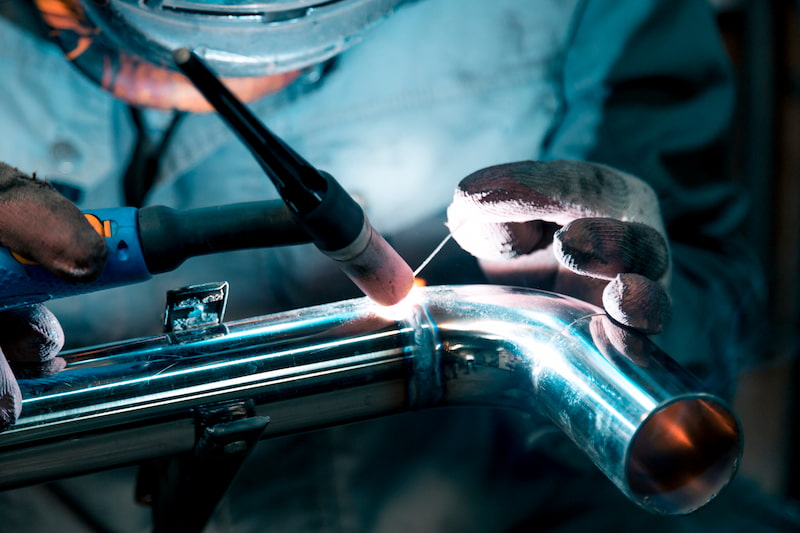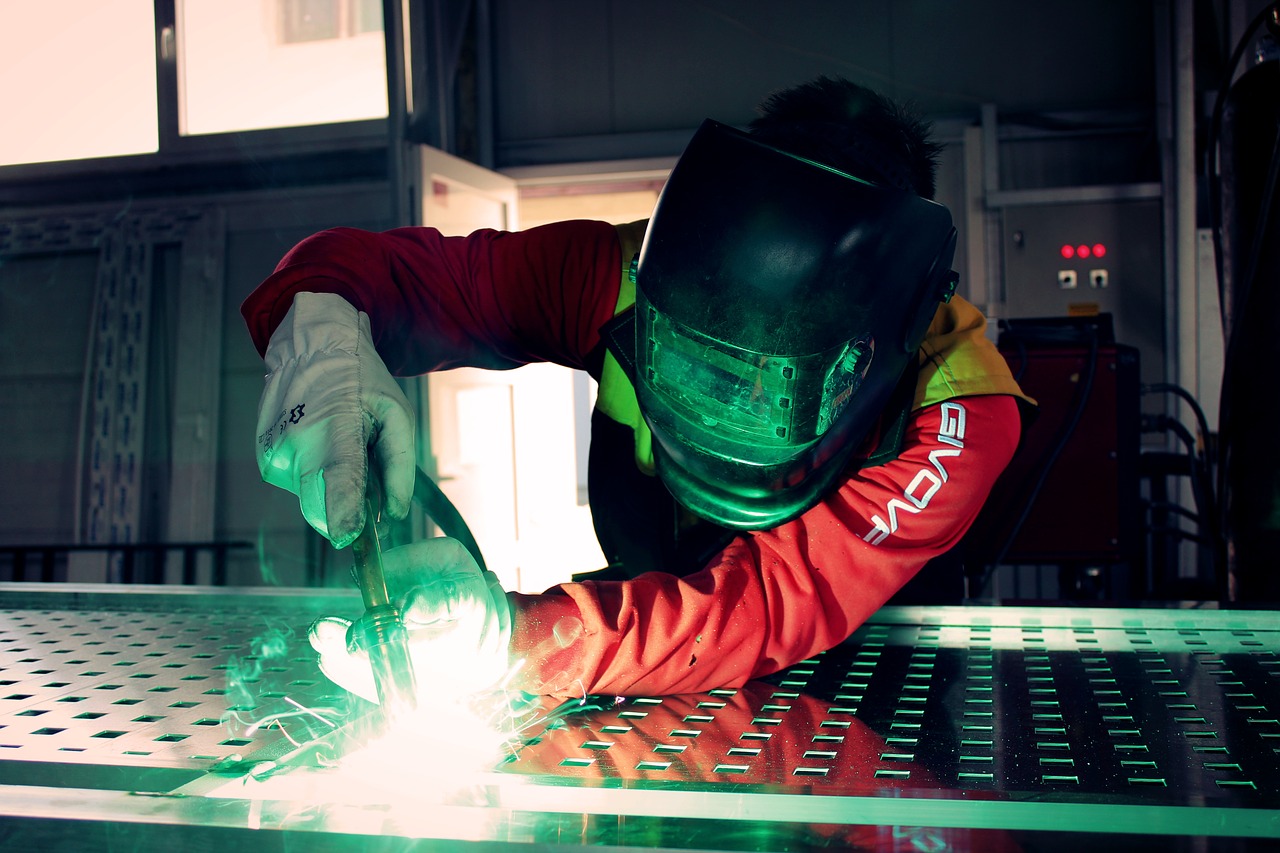Common Welding Repair Service Issues and How to Address Them Efficiently
Welding repair services often experience a series of concerns that can threaten the stability of the last item. Common issues include poor infiltration, porosity, and imbalance, to name a few. Each flaw offers unique challenges that call for specific techniques for resolution. Recognizing these concerns is necessary for welders intending to improve their results and skills. This discussion will certainly explore these common welding repair work problems and effective techniques to resolve them.
Poor Penetration
Insufficient penetration happens when the weld metal fails to fully fuse with the base product, leading to weak joints and possible structural failures. This concern commonly comes from insufficient warm input, wrong electrode angle, or improper welding rate. Welders might run into poor infiltration because of a miscalculation of the required specifications for a details material thickness or kind. In addition, contamination on the base product's surface area can impede effective bonding, worsening the problem. To deal with insufficient infiltration, welders need to assure suitable setups on their equipment and preserve a clean work surface. Normal evaluation of welds is advised to identify any deficiencies early, permitting prompt improvements and the avoidance of jeopardized architectural honesty in bonded settings up.
Porosity
Porosity is a typical defect in bonded joints that manifests as little gas bubbles trapped within the weld steel. This defect can jeopardize the stability of the weld, bring about minimized stamina and possible failing under anxiety. Belgrade Welding. Porosity usually occurs from contamination, wetness, or improper welding strategies, which permit gases to get away into the liquified weld pool. To resolve porosity, welders ought to assure proper surface preparation, keep a clean workplace, and use appropriate welding parameters. In addition, choosing the right filler product and protecting gas can reduce gas entrapment. Normal evaluation and testing of welds can assist determine porosity early, assuring timely corrective activities are taken, thereby maintaining the high quality and integrity of the welded framework
Imbalance
Imbalance in welding can emerge from numerous factors, including incorrect setup and thermal development. Understanding the root triggers is necessary for reliable resolution. A number of modification techniques are offered to straighten elements and assure structural honesty.
Reasons for Misalignment
Welding misalignment often originates from a range of underlying concerns that can jeopardize structural integrity. One main cause is inappropriate fit-up of components before welding, which can lead to gaps and uneven surface areas. Variants in thermal development throughout the welding procedure can also cause distortion, specifically if the products being signed up with have various coefficients of expansion. In addition, insufficient securing and fixturing may fail to hold components safely in position, resulting in activity throughout welding. Poorly maintained devices, consisting of welding makers and devices, might present disparities in the weld grain, more contributing to misalignment. Lastly, operator mistake, coming from inadequate training or experience, can also play a significant function in developing misaligned welds.
Adjustment Methods Available
Addressing imbalance effectively needs a combination of corrective techniques customized to the specific problems at hand. One common technique is the usage of jigs or components to hold elements in the correct placement throughout welding, making certain regular placement. In addition, preheating the products can help in reducing distortion and enhance fit-up. For substantial imbalance, mechanical realignment strategies, such as utilizing hydraulic jacks or clamps, can be used to deal with the setting prior to welding. Post-weld warmth treatment may additionally be essential to soothe tensions triggered by imbalance. Ultimately, careful assessment and change throughout the setup stage can avoid misalignment problems from ending up being considerable problems, advertising a smoother welding procedure and boosting general structural honesty.
Distortion
Distortion is a typical obstacle in welding that can develop from numerous elements, including irregular home heating and cooling. Understanding the root causes of distortion is essential for carrying out reliable prevention strategies. Addressing this issue not only improves architectural integrity but likewise improves the overall high quality of the weld.
Causes of Distortion
When based on the extreme heat of welding, products commonly go through changes that can bring about distortion. This sensation mostly emerges from thermal expansion and contraction during the welding process. As the weld area warms up, the product increases; upon cooling, it contracts, which can develop interior stresses. On top of that, irregular home heating across a workpiece can aggravate these stresses, causing bending or a fantastic read flexing. The kind of material also plays a significant duty; steels with differing thermal conductivity and coefficients of growth might react in different ways, causing unpredictable distortions. Bad joint style and inadequate fixturing can add to imbalance during welding, enhancing the probability of distortion. Understanding these reasons is necessary for reliable welding repair work and avoidance methods.
Prevention Techniques
Effective avoidance methods for distortion during welding concentrate on controlling warmth input and guaranteeing proper joint layout. Keeping a regular warm input helps to decrease thermal growth and tightening, which can result in distortion. Making use of strategies such as pre-heating the work surface can also lower the temperature level slope, advertising uniform heating. Furthermore, selecting suitable joint layouts, such as T-joints or lap joints, can enhance security and reduce stress and anxiety focus. Applying appropriate fixturing to secure the work surfaces in position additionally aids in maintaining alignment during the welding process. Lastly, staggered welding sequences can disperse warm much more uniformly, avoiding local distortion. By applying these techniques, welders can considerably lower the likelihood of distortion and enhance the total top quality of their welds.
Cracking
Breaking is an usual concern run into in welding repairs, frequently arising from different elements such as incorrect air conditioning prices, material choice, or insufficient joint prep work. The occurrence of cracks can greatly jeopardize the stability of the weld, causing potential failings throughout operation. To address this problem, welders need to first assess the origin creates, ensuring that products are compatible and properly picked for the specific application. Additionally, managing the cooling rate during the welding procedure is crucial; rapid air conditioning can cause tension and lead to breaking. Appropriate joint style and prep work likewise add to reducing the danger. Applying these methods can boost weld top quality and toughness, ultimately lowering the probability of cracking in ended up weldments.

Insufficient Combination
A considerable concern in welding repair services is insufficient combination, which takes place when the weld metal does not properly bond with the base material or previous weld passes - Montana Mobile Welding and Repair Belgrade Fabrication. This issue can lead to weaknesses in the joint, potentially compromising the stability of the welded structure. Variables adding to insufficient combination consist of inadequate warm input, incorrect welding strategy, and contamination of the surface Get the facts areas being joined. To address this concern efficiently, welders ought to ensure appropriate pre-weld cleansing and surface prep work, along with adjust their welding parameters to attain ample infiltration and blend. Routine examination throughout the welding procedure can also help recognize insufficient blend early, enabling for prompt corrective steps to enhance the total quality of the weld
Overheating
While welding repair services can improve architectural honesty, overheating provides a significant challenge that can cause product deterioration. Excessive heat throughout welding can modify the mechanical homes of steels, causing lowered toughness, boosted brittleness, and warping. This phenomenon is particularly essential in high-stress applications where architectural reliability is critical. Determining getting too hot can include aesthetic assessments for staining or distortion, as well as checking temperature level during the welding procedure. To alleviate the risks connected with getting too hot, welders ought to employ proper methods, such as controlling warm input, changing traveling speed, and utilizing ideal filler materials. Additionally, executing pre- and post-weld heat treatments can help recover material residential or commercial properties and enhance the overall high quality of the repair service, making sure long-term efficiency and safety and security.
Often Asked Questions
What Are the Typical Indications of a Welding Flaw?

Exactly How Can I Test My Welds for Top quality?
To examine welds for quality, one can utilize aesthetic assessments, ultrasonic testing, and radiographic techniques. Each strategy ensures architectural integrity, identifies defects, and validates adherence to defined criteria, ultimately improving the reliability of the bonded joints.
What Security Preventative Measures Should I Take While Welding?
When welding, one need to prioritize security by using proper personal safety equipment, ensuring appropriate ventilation, protecting flammable materials away, maintaining a tidy work area, and knowing surroundings to stop injuries and accidents.
Can I Repair a Weld Without Redoing the Entire Joint?
Fixing a weld without redoing the entire joint is feasible, depending on the damage (Belgrade). Methods such as grinding, adding filler material, or using a welding procedure can successfully attend to specific imperfections while preserving the bordering framework
What Equipment Are Important for Efficient Welding Repairs?
Crucial devices for effective welding fixings include a welding machine, cable brush, grinder, safety gear, clamps, and filler products. Each tool plays a crucial role in ensuring high quality and security throughout the repair work process. Porosity typically arises from contamination, wetness, or inappropriate welding methods, which enable gases to run away into the liquified weld pool. Poorly kept tools, consisting of welding makers and devices, may introduce inconsistencies in the weld grain, additional adding to imbalance. When subjected to the intense heat of welding, materials often undergo adjustments that can lead to distortion. Fracturing is an usual issue encountered in welding repair services, often resulting from various elements such as incorrect air conditioning rates, material choice, or poor joint preparation. A significant problem in welding repair services is insufficient blend, which see this website occurs when the weld metal does not adequately bond with the base material or previous weld passes.
Comments on “Immediate responses to weld misalignment in Montana Mobile Welding and Repair Fabrication”